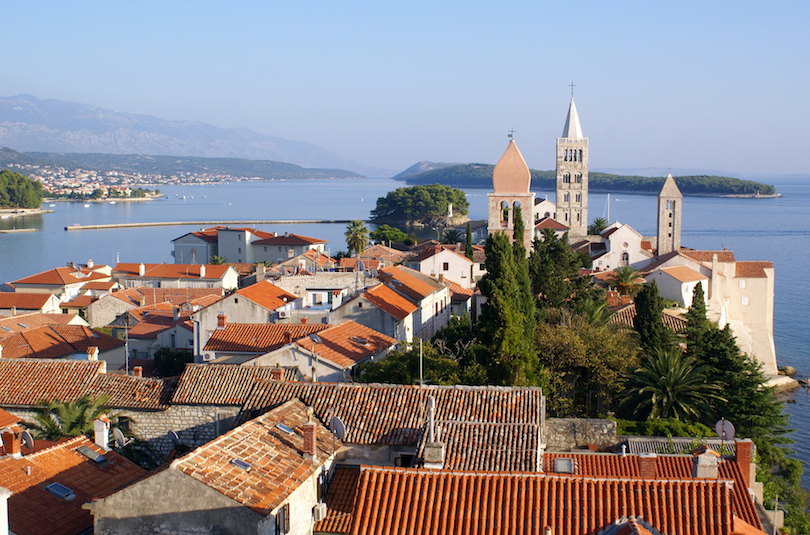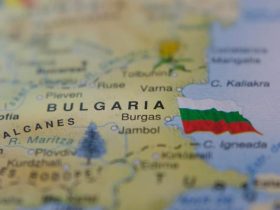The sheer diversity of the Croatian islands guarantees there is something for everybody in the Adriatic, irrespective of whether you’re a party animal, lotus-eater, young family or some combination of all three. Jonathan Bousfield, author of The Rough Guide to Croatia, picks his top ten.
Susak: the island for kite flyers
One for the true connoisseur of Mediterranean getaways, this small island just off the shore of its bigger neighbour Lošinj is mainly composed of sand, its crumbly, ochre-coloured cliffs covered in ferns, wild fennel and towering bamboo-like grasses. Criss-crossed by footpaths, it’s a blissfully easy island to research, and the shores are quite simply superb. Susak is also home to the yearly Air and Kite Festival, a celebration of the kite-flyer’s art which also includes romantic, everybody-welcome after-parties.
Rab: the island to get buckets and spades
In a country that does not have much in the manner of classic sandy shores, Rab is very much the odd one from the Croatian islands. Most famous of its golden strands is Veli mel, a wide shallow bay that is packed with paddling households from June to September. If splashing about with the crowd isn’t your thing, there is a succession of wilder, uncommercialized sandy beaches liner Rab’s heavily manicured northern shore. Best-known of them is Sahara, a bay reserved for naturists, even though there are loads of equally encouraging coves on each side. Attitudes to clothing are fairly relaxed where you’re, and views of the mountainous mainland just increase the raw all-natural feel.
Silba: the island to get Arcadians
If it comes to sea-lapped Shangri-las with no traffic and no resorts, kidney-shaped Silba is as great as they come. Not only are there no cars on the island, a ban on bicycles from mid-July to late August serves to preserve the island’s pedestrian pace. Strolling along maquis-lined country lanes in search of untamed beaches is the only adrenalin sport you are very likely to encounter here. Silba’s permanent population of roughly 300 is swelled tenfold in summertime, when independent travellers from all over the nation come to enjoy the island’s uniquely relaxing Arcadian vibe. Fregadon is among the Adriatic’s greatest B&Bs.

Murter: the island to get festivals
Murter’s quiet, chilled-out reputation was somewhat turned on its head by the coming of the Garden business in 2012. And what’s more, Murter’s easy-going character hasn’t been significantly ruffled by all this activity — the Garden website is quite scenic, along with the island’s olive groves, adorable ports and secretive coves remain just as magical as before.
Šolta: the island for biking and hiking
Despite being the nearest island to the port of Split, Šolta stays completely absent from the package-tourist map. Small, compact rather than dramatically mountainous, it’s perfect for biking and walking, especially as soon as you get away from the main roads. Best way to explore is to take into the little-travelled paths of this unspoiled interior, going through half-forgotten, Kasbah-like villages of stone houses roofed with thick stone slabs. The picturesque harbour of Maslinica, a blissful mix of unspoiled fishing village and posh yachting berth, could be the Adriatic’s best-kept secret.
In the gossip pages to the travel publications, Hvar has long been the global media’s favourite of the Croatian islands, a status it shows no indication of losing in 2013. Hvar Town rivals Dubrovnik in terms of its architectural glories and can be equal in the glamour stakes also, with paparazzi roving the Riva to find out who is transiting from luxurious yacht to cocktail bar.
If Hvar Town is the celebrity magnet, the remaining part of the island reflects another side of the Adriatic coin. Laid back and full of charm, it remains robustly popular with those who want a piece of the Mediterranean that is family-oriented, unspoiled and reasonably priced.
A magnet for independent travelers and lotus-eating Zagreb folk, Vis is one of those Croatian islands that unites unspoiled beauty with seriously good restaurants and some decidedly unique regional delicacies. The regional waters signify a number of the richest fisheries in the Adriatic, and it is no surprise that Vis’s restaurants offer some of their freshest lobster from the Mediterranean. Additionally, establishment such as Pojoda, Val and Kantun rustle up roasts and stews that are predicated on old-school recipes not found elsewhere. The island also boasts its very own fast-food staple in the shape of the pogača od srdele (anchovy pasty), a seriously fishy snack which will have you racing back to the local bakery to get more.
Proizd: the island to get sunbathers
One of the most fantastic places to sunbathe in the whole of Dalmatia, the sloping-rock shores of Proizd island will appeal to anyone who enjoys the concept of spreading their towel on a dramatic geological feature. It’s actually an islet rather than island in its own right, reached by taxi boat from the port of Vela Luka on Korčula. Proizd’s”shores” are definitely unique, consisting of stone plates shelving into turquoise waters. The island is at its most beautiful in evening, once the stones change colour from grey to golden as the sun slowly descends. The Mediterano agency can book rooms and flats in and around Vela Luka.
Mljet: the island to get romantics
Most people see this national-park island as a day-trip from Dubrovnik, and lose out on the benefits of a longer trip to one of their best Croatian islands. With village lodging, nature walks and a profusion of silent bays, it is a fantastic spot to get romantic. The island stays blissfully unspoiled, filled with bicycle-pedalling and kayak-paddling trippers during the day, startlingly silent and stress-less at night. According to legend, Odysseus holed up here for seven years using the nymph Calypso, and it is not tough to see why he found it so tough to leave. The family-run Boutique Accommodation Mljet provide superb rooms and flats in an old stone house.











